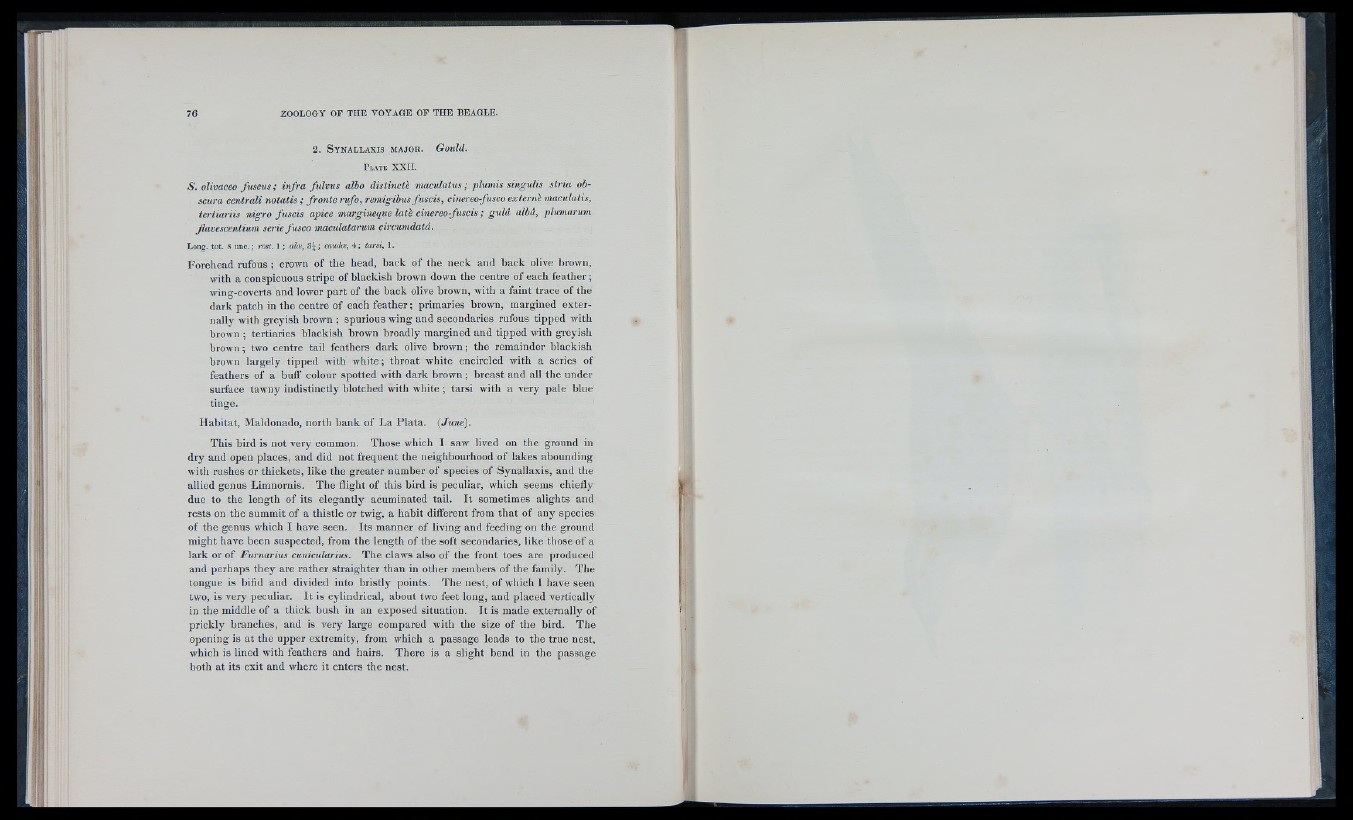
2 . S y n a l l a x i s m a j o r . Gotdd.
P late X X I I .
S. oliváceo fuscus ; infra fidvus albo distinctè maculatus ; phimis singidis stria obscura
centrali notatis ; fronte rufo, remigibus fuscis, cinereo-fusco externé maculatis,
tertiariis nigro fuscis apice margineque latè cinereo-ftiscis ; gulâ albâ, plumarum
favescentium serie fusco maculatarum circumdatá.
Long. tot. 8 unc. ; rost. 1 ; aloe, ; caudæ, 4 ; tarsi, 1.
Forehead rufous ; crown of the head, back of the neck and back olive brown,
with a conspicuous stripe of blackish brown down the centre of each feather ;
wing-coverts and lower part of the back olive brown, with a faint trace of the
dark patch in the centre of each feather ; primaries brown, margined externally
with greyish brown ; spurious wing and secondaries rufous tipped with
brown ; tertiaries blackish brown broadly margined and tipped with greyish
brown; two centre tail feathers dark olive brown; the remainder blackish
brown largely tipped with white; throat white encircled with a series of
feathers of a buff colour spotted with dark brown ; breast and all the under
surface tawny indistinctly blotched with white ; tarsi with a very pale blue
tinge.
Habitat, Maldonado, north bank of La Plata. (June).
This bird is not very common. Those which I saw lived on the ground in
dry and open places, and did not frequent the neighbourhood of lakes abounding
with rushes or thickets, like the greater number of species of Synallaxis, and the
allied genus Limnornis. The flight of this bird is peculiar, which seems chiefly
due to the length of its elegantly acuminated tail. It sometimes alights and
rests on the summit of a thistle or twig, a habit different from that of any species
of the genus which I have seen. Its manner of living and feeding on the ground
might have been suspected, from the length of the soft secondaries, like those of a
lark or of Furnarius cunicularius. The claws also of the front toes are produced
and perhaps they are rather straighter than in other members of the family. The
tongue is bifid and divided into bristly points. The nest, of which I have seen
two, is very peculiar. It is cylindrical, about two feet long, and placed vertically
in the middle of a thick bush in an exposed situation. It is made externally of
prickly branches, and is very large compared with the size of the bird. The
opening is at the upper extremity, from which a passage leads to the true nest,
which is lined with feathers and hairs. There is a slight bend in the passage
both at its exit and where it enters the nest.